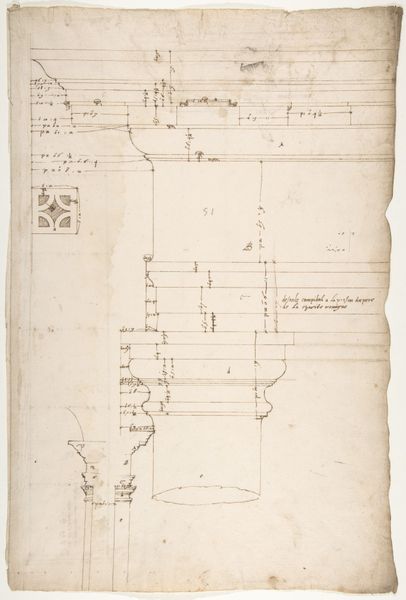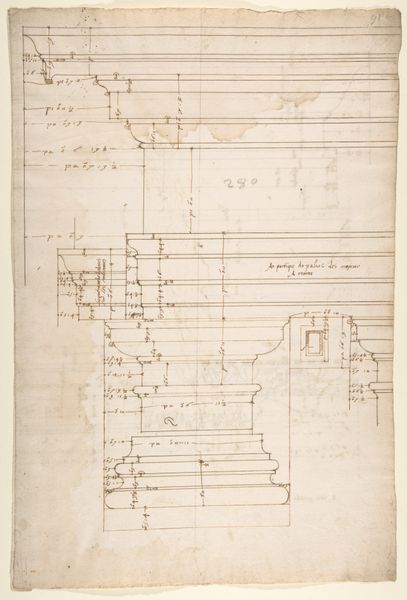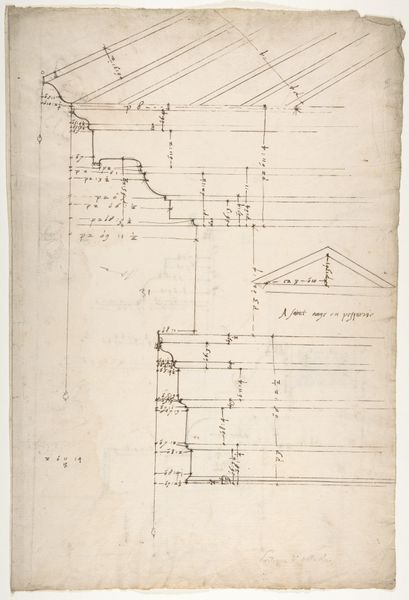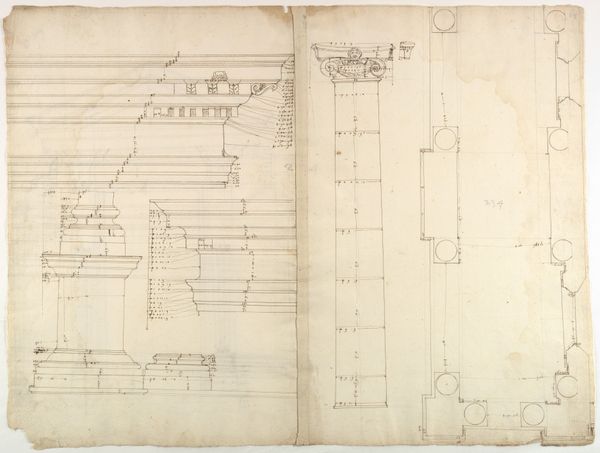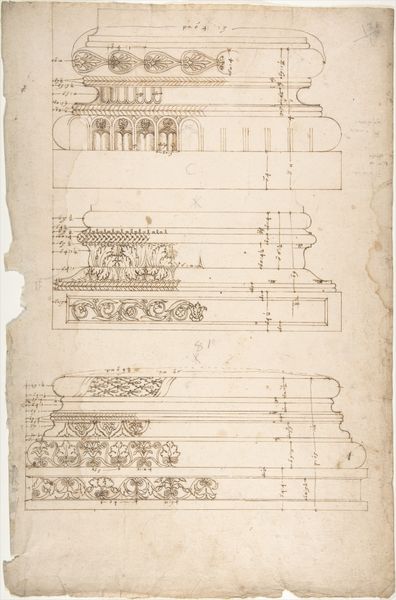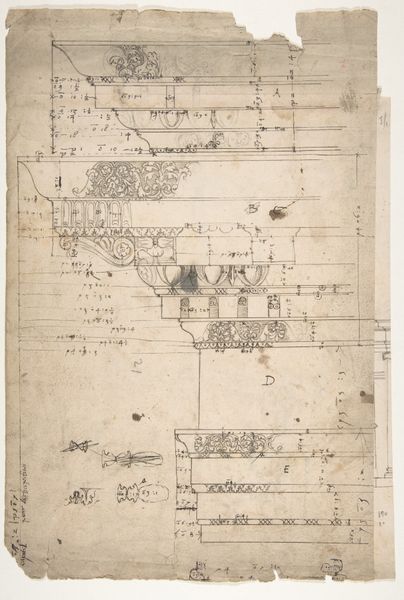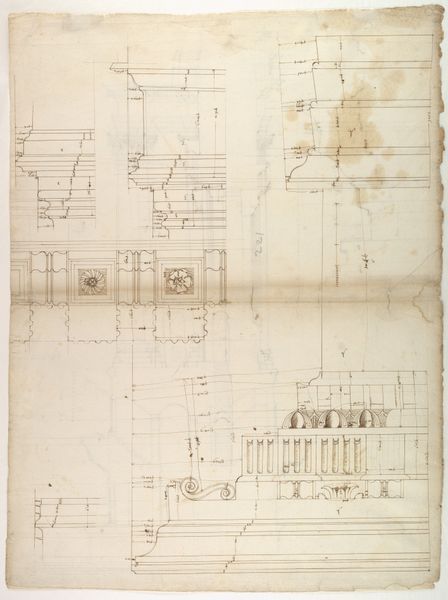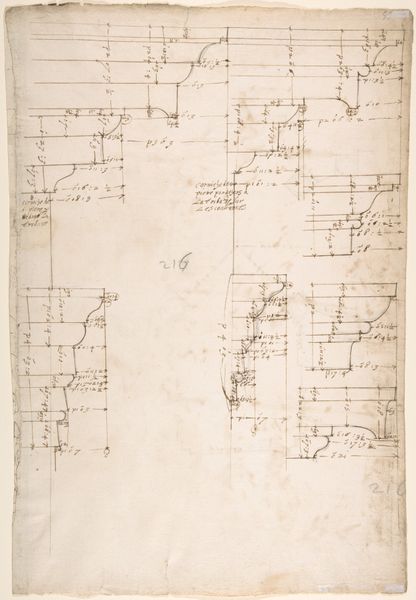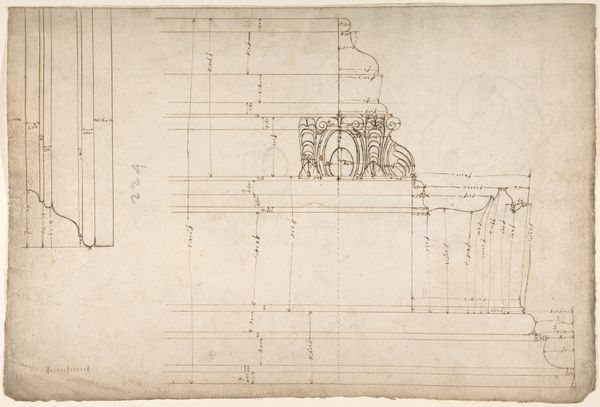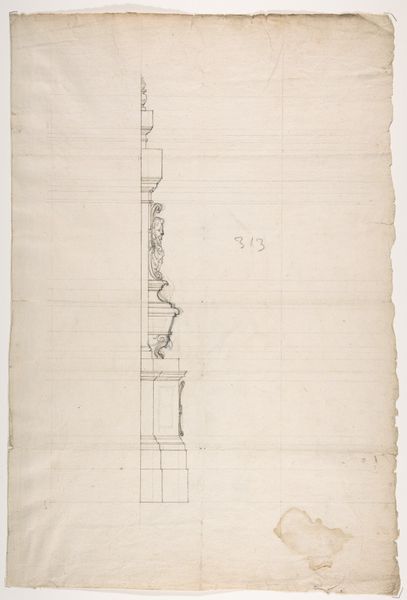
Unidentified, Doric cornice, elevation; Theater of Marcellus, Doric cornice, elevation (recto) Unidentified, cornice, elevation (verso) 1500 - 1560
0:00
0:00
drawing, print, etching, architecture
#
drawing
# print
#
etching
#
etching
#
geometric
#
line
#
academic-art
#
architecture
Dimensions: sheet: 14 5/8 x 10 15/16 in. (37.2 x 27.8 cm)
Copyright: Public Domain
Editor: Here we have an etching and drawing, titled "Unidentified, Doric cornice, elevation," from around 1500-1560, showing architectural elements. What really grabs me are all these measured lines—it looks like an architectural blueprint, really highlighting the functional aspect. What do you see in this work? Curator: I’m struck by the confluence of process evident here. The etching allowed for multiple reproductions, hinting at a democratization of knowledge regarding classical architecture, even as the drawing indicates a bespoke intervention, perhaps even innovation. Look at the detailed notations. What was the social function of documenting architecture with such meticulous measurements? Was it about creating modular architectural elements for easier building? Editor: That's a really good question! Were they trying to standardize classical design for more widespread use, almost like a building kit? Curator: Precisely. It compels us to consider the labor involved, the cost of materials, and how architectural knowledge was disseminated during this period. Etchings allowed workshops across Europe to share designs, fundamentally impacting the materiality and aesthetic of buildings even far from Italy. Also, we can't ignore that this is a print medium: considering its multiple usages is critical here. Was it meant as pure documentation or rather as instruction and template material? Editor: I never considered it as a means to redistribute and share resources of knowledge! This etching acts as a tangible example of architectural practice and material culture of the 16th century. Curator: Exactly. It demonstrates how even seemingly straightforward depictions can be viewed as objects intrinsically woven into their socio-economic and material conditions of creation and distribution. It truly shows you how to challenge high art and craft traditions. Editor: Thank you! This really changes how I'll approach looking at prints.
Comments
No comments
Be the first to comment and join the conversation on the ultimate creative platform.
